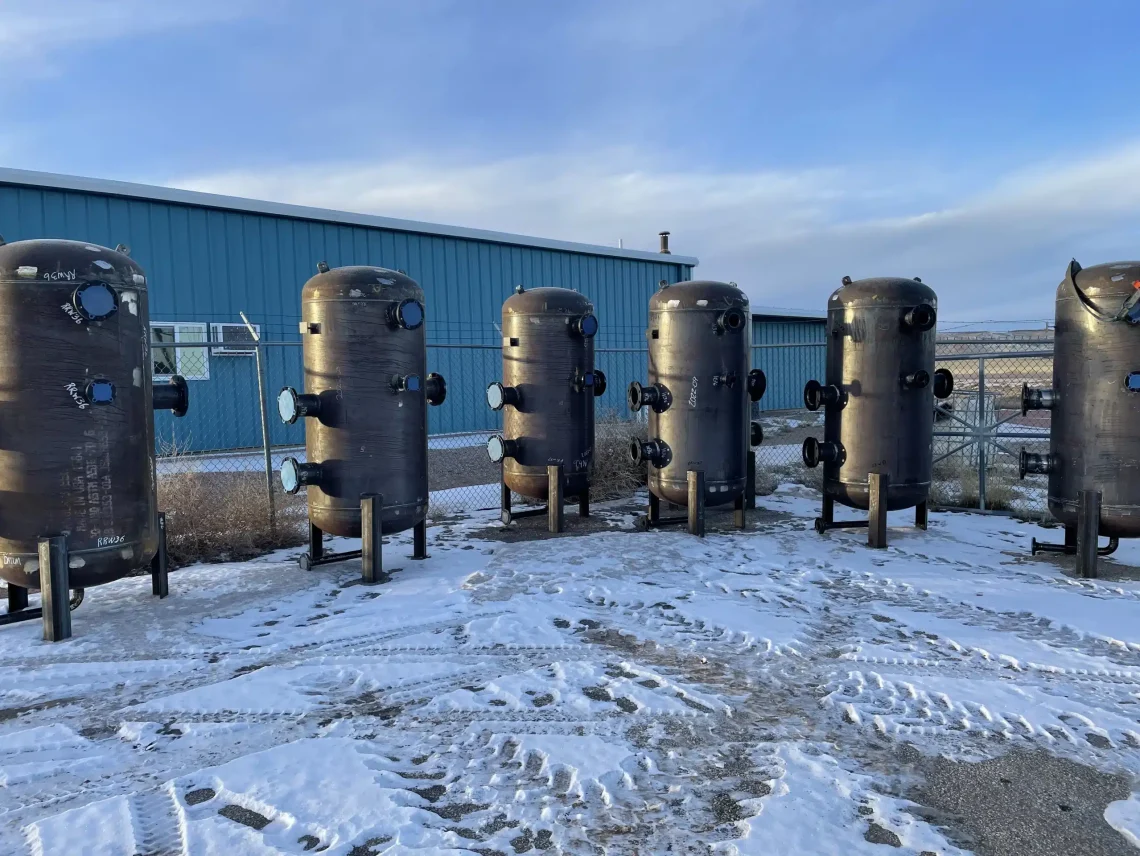
Table of Contents
ToggleVessel fabrication is a highly specialized process that ensures the safety and efficiency of pressure vessels used across industries like petrochemicals, pharmaceuticals, and manufacturing. From precision design and material selection to expert welding, heat treatment, and certification, each step is vital. Following strict standards like ASME and PED, this process ensures vessels are durable, compliant, and built to perform under pressure.
In today’s demanding industrial environment, vessel fabrication is more than just building tanks it’s a highly specialized engineering process that ensures the safety and efficiency of everything from chemical storage to energy systems. This comprehensive guide reveals every crucial stage of vessel fabrication, from the earliest design blueprints to the final certification. Whether you’re involved in petrochemicals, pharmaceuticals, or manufacturing, understanding vessel fabrication will help you meet industry standards and deliver reliable results. For additional context, Wikipedia’s article on pressure vessels offers a foundational overview of why these structures are so vital.
Every successful vessel fabrication project starts with detailed engineering and compliance planning. Expert teams use advanced software to model designs that meet strict codes, such as the ASME Boiler and Pressure Vessel Code and the Pressure Equipment Directive (PED). Moreover, incorporating lessons from our article on key design conditions for pressure vessels ensures your project is both safe and efficient from the very start.
Once the design is approved, the next step involves selecting appropriate materials, such as carbon steel, stainless steel, or specialty alloys. These materials are chosen based on their compatibility with the vessel’s intended use, their resistance to corrosion, and their ability to withstand both internal and external pressures. This stage is vital for long-term durability and is supported by research from educational sources like Engineering Toolbox and government guidelines on material properties.
With materials ready, fabrication progresses to cutting, rolling, and forming. Highly precise tools, such as plasma cutters and waterjets, are used to achieve exact dimensions. The transition from flat metal sheets to perfectly curved cylinders is critical rounded shapes are preferred for pressure vessels because they distribute stress more evenly, a principle explained further in our deep dive: Why Pressure Vessels Are Not Rectangular in Shape.
Following forming, the vessel’s components are expertly welded together. Skilled welders use TIG or MIG welding to guarantee strong, leak-proof joints. Every weld is inspected through non-destructive testing (NDT) methods like radiographic and ultrasonic examination procedures that not only meet but often exceed industry standards outlined by NACE International, a leading authority on corrosion and safety.
After welding, heat treatments such as annealing, tempering, or quenching are used to relieve internal stresses and strengthen the vessel. Following this, surface coatings like epoxy or polyurethane are applied to protect against corrosion and harsh chemicals, further extending the vessel’s operational life.
In the final fabrication stage, vessels undergo rigorous pressure testing hydrostatic and sometimes pneumatic tests ensure there are no leaks or weaknesses. This phase also includes comprehensive quality checks and documentation. For further exploration, the National Board of Boiler and Pressure Vessel Inspectors provides excellent resources on industry best practices.
Upon successful testing, vessels receive certification (such as the ASME U-Stamp), detailed records are assembled, and the finished product is delivered for installation. It’s crucial that these steps are completed with precision to guarantee safe, reliable operation for years to come.
If you’re interested in cost breakdowns or wish to optimize your next vessel project, review our article on exploring the costs of manufacturing a pressure vessel.
To sum up, vessel fabrication is not just about manufacturing a product it’s about combining science, engineering, and strict compliance to deliver safety, efficiency, and value. The next time you encounter a pressure vessel in action, you’ll know the extraordinary process and expertise that brought it to life.
Let Red River handle your next vessel fabrication challenge. With decades of experience, a dedication to American values, and full regulatory compliance, we’re your trusted partner for projects big and small. Contact us today and discover the Red River difference!
Vessel fabrication is the specialized process of designing and building pressure vessels, adhering to rigorous codes like ASME and PED for safety and reliability.
Vessel fabrication requires additional safety checks, pressure testing, and certification, setting it apart from general metal manufacturing.
Certifications include the ASME U-Stamp and PED compliance, which signal adherence to internationally recognized safety and quality standards.
Materials such as carbon steel, stainless steel, and high-performance alloys are most frequently chosen, each tailored to the vessel’s operating environment.
Tests like radiographic (RT) and ultrasonic (UT) examinations are used to inspect welds without damaging the vessel structure.
The timeline varies; simple vessels may take a few weeks, while large, highly customized units can require several months.
Costs depend on size, material, design complexity, and certification needs. For a detailed analysis, visit our vessel cost guide.
Cylindrical vessels distribute stress more efficiently, minimizing weak points—a concept you can learn more about here.
In the realm of industrial solutions, Red River emerges as a pioneer, offering a diverse range of custom-engineered products and facilities. Among our specialties is the design and production of Custom/OEM Pressure Vessels, meticulously crafted to meet individual client requirements, ensuring performance under various pressure conditions. Our expertise extends to the domain of prefabrication, where Red River leads with distinction.
The company excels in creating prefabricated facilities, modules, and packages, reinforcing its stance as a forerunner in innovation and quality. This proficiency is further mirrored in their Modular Skids offering, where they provide an array of Modular Fabricated Skid Packages and Packaged equipment. Each piece is tailored to client specifications, underlining their commitment to delivering precision and excellence in every project they undertake.